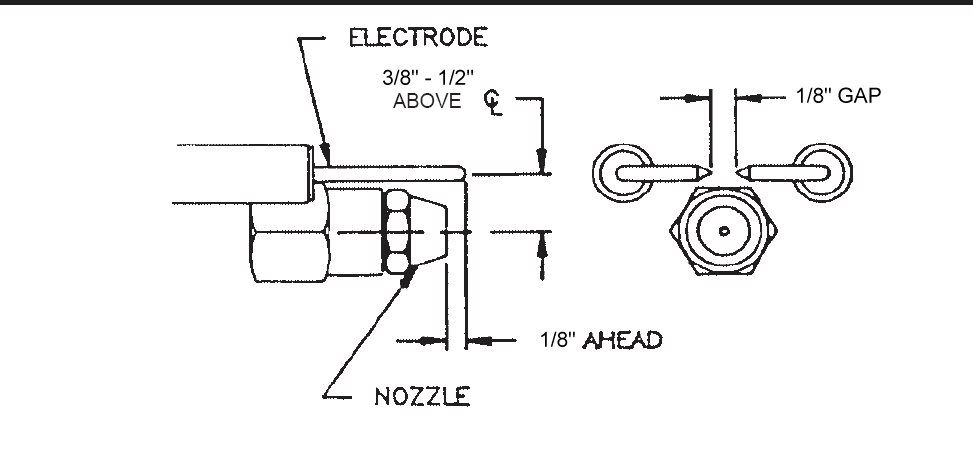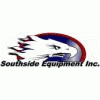-
Content count
1,128 -
Joined
-
Last visited
-
Days Won
5
Posts posted by Russ Johnson
-
-
Smoking out seams and the holes the nipples go through indicates raw fuel in the insulation. About the only thing you can do to stop it is to pull the coil, wash the coil and skin, and rewrap with new insulation, including the disc in the bottom.
-
Belt drives pull water better but a direct drive will if the hose is as short, straight, and large as possible. 3/4" poly braid tubing will work well for 4 gpm. You want as short and straight a distance as possible between the tank and the pump. If you've got the aluminum inlet strainer that normally comes on them, trash it and get a brass "Y" strainer. They have a straight run through with a screen sitting diagonally in the stream. Easy to clean, too.
-
Looks like he couldn't even pressure wash the glue shadows from the previous lettering job...he he
-
40# Pail, $50.00
-
Thanks Russ. What is it that everyone swears by this ? What's it's advantages or disadvantages for that matter ??I recommend downstreaming instead. I see no sense diluting the heck out your chems so you can apply at 2:1 and lug 5 gallon pails everywhere when you can inject a full strength chem from your truck/trailer. Injectors are available to meter at 4:1.
-
-
Invite Russ up from Alabama let him walk around in his birthday suit.LMAO!
-
Might be the thermostat. If you're comfortable playing with the wiring, call me tomorrow and I'll go through a couple of tests with you.
-
Have you seen this diagram?

Electrode misadjustment would cause a misfire rather than an outage. Does it light right away and burn clean when it does fire? Will it relight after it has gone cold, or do you shut it off and try later? The Racor filter that is on that unit is the best one going IMO, but when they get dirty, they won't pass fuel for long. Does it get extremely hot before it quits or just warm?
-
Applying oxalic directly on top of a house wash mix (alkaline) probably neutralized the acid.
-
Car washes upstream through solenoids supplied by various product tanks. A remote control activating several relays could turn the chems on and off. For that matter, you could remote start and stop the pump with a clutch, turn the burner on and off, and even shut the engine down.
-
Careful cutting of the hose is key...you don't want the end ragged or flared. The ends also come for R1 or R2 hose and are not interchangeable. On some thicker walled hose you may have to skin the rubber back 1" or so. This will not affect the repair, as the end grasps the steel wire braid and not the rubber. Screw the ferrule (outer piece) on counter clockwise. Apply grease to the insert and screw it in clockwise. The last 3/8" is the toughest...this is where the hose does the majority of its expansion. I like to use an impact wrench to assemble them...much easier.
-
I have used these ends for years for "in xhop repair", they hold up well. Fixing is a piece of cake. I do enough that I have a 6" cut off saw...about $35.00 at Harbor Freight . A carbide hacksaw blade works well, too. Don't bother with a regular hacksaw. The wire in the hose snaps the teeth off the blade which usually leaves it pretty ragged on the end, which makes the fix harder.
-

Use 1 of these for a hole near the end or 2 and a coupling for in the hose repair.
-
-
SAtellite has a nice clean, yet not Vbulletin look and the font colors are easier to read.
-
$18.75 to both of your locations.
-
Are the nozzles individually rated for your machine or combined? You should have #2.5, #3 tops to equal the single nozzle for your machine.
-
Give me your zip code and I'll get you a rate.
-
I use the re-useable ends to repair hose in my shop...have never had one blow off except one...the hose had been exposed to steam and cooked the inner liner.
-
Rain will wash paintball off...shouldn't take much. They hurt, too, by the way.
-
A 4 nozzle bar is available for the Big Guy...2 nozzles at each end about 4" apart.
-
Check all the electrical reset buttons. Sometimes when you shut down without turning off the burner it will just kick out. Just a button push fix.Is that what ended up being wrong with yours?
-
30 ND is perfectly fine for all piston pumps.




Hotsy Burner
in Tools, Equipment & Basic Maintenance
Posted · Report reply
Ceramic fiber insulation is the ONLY stuff to use. It is rated for the high temps associated with direct fire contact. Fiberglass building insulation is designed to isolate two temps with a 30 to 100 degree variance. Burner stack temps can exceed 500 degrees. I have the insulation for $2.75 sq. ft. if you need some. Measure the skin diameter and call me, I'll figure out how much you'll need.